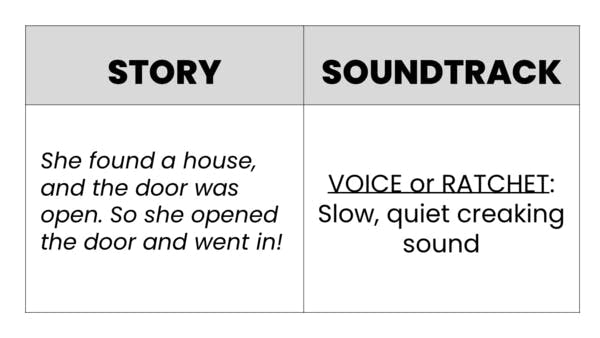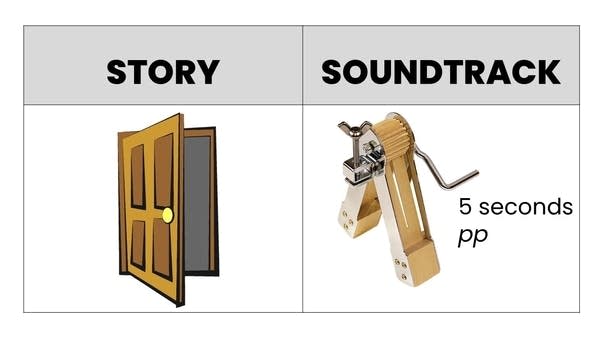Music & Literacy: Create a Musical Story

Like this?
Log in to share your opinion with ClassNotes and add it to your favorites.
Register for Free
Please Log In
Reset Password
Age Range: Elementary, Grades K-6
Learning Objective: Students will generate original artistic ideas in response to verbal and written prompts.
Total Lesson Time: Approximately 30 minutes
Download This Free Lesson Plan
Note to Teachers: Language and examples are geared toward early elementary; however, the lesson concept can be adapted and is very appropriate for older students as well.
INTRODUCE storytelling through discussion
Ask students to think of their favorite story, then turn to a friend and whisper their favorite book or story.
Say, “Now turn to a different friend and whisper your favorite song or kind of music.”
Explain that adding music to a story makes it more exciting. Today we will create our own soundtrack for a story to make it exciting and memorable.
CREATE a story “soundtrack”
Select a favorite book to read aloud. (Scroll down for book recommendations!)
While reading, pause after key moments and ask students to brainstorm sound effects (body percussion or vocal sounds) that enhance the story.
Establish a “start” and “stop” signal to cue students. (i.e. Book: “The boy ran away!” Sound effect: Drum on lap quickly for 5 seconds)
Gather some classroom instruments or found objects.
Read the book again and allow students to explore and improvise sound effects using instruments.
Fine-tune the group’s musical choices by adding “story cards” like the examples below from Goldilocks and the Three Bears. Use words or graphics depending on your students’ literacy level.




Practice and refine your musical story!
Assign a conductor to start and stop cues. Take turns as the reader/narrator.
EXTEND storytelling through additional activities
Listen to storybooks that have been commissioned as musical pieces, such as: Perfect Square, One-Dog Canoe, or the classic Peter and the Wolf.
Listen to an episode of YourClassical Storytime. Notice how the music helps tell the story.
BOOK RECOMMENDATIONS
K-2
Moo by David LaRochelle
Snail Trail by Ruth Brown
Mortimer by David Munsch
3-5
Skeleton Cat by Kristyn Crow
The Z was Zapped by Chris Van Allsburg
Tuesday by David Wiesner
Be You! by Peter H. Reynolds
Tip: Books with a lot of animal sounds work well for vocalization and vocal development. Action-oriented books work well if you have a lot of classroom percussion instruments available.

YourClassical is a public media organization and your support makes it possible.

This activity is made possible in part by the Minnesota Legacy Amendment’s Arts & Cultural Heritage Fund.








